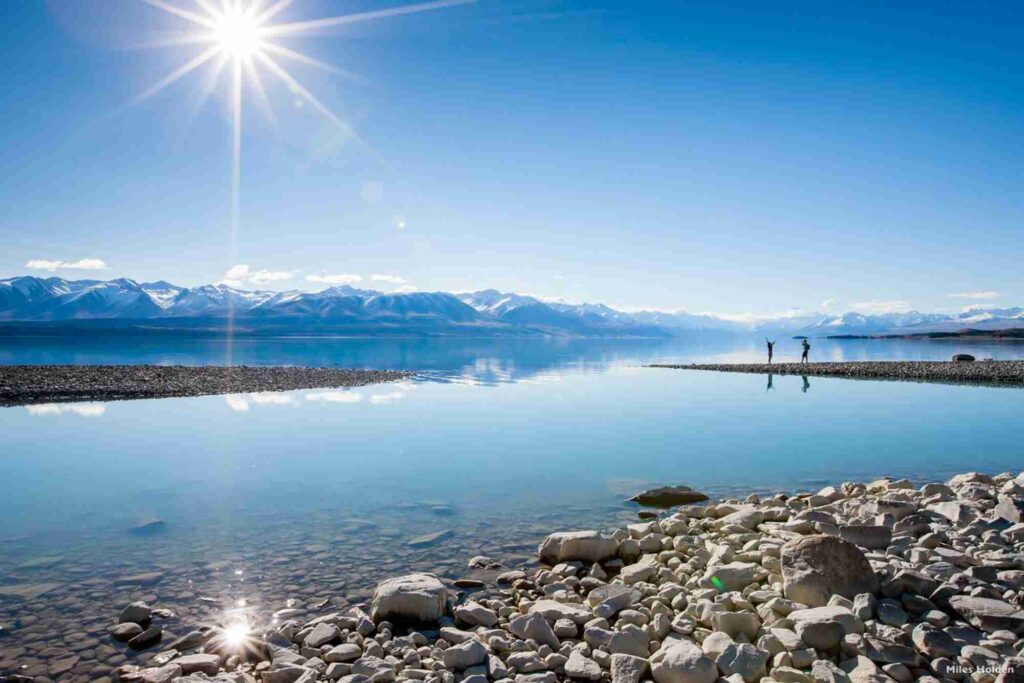The Best Time to travel to Australia and New Zealand, two of the most beautiful and diverse countries in the Southern Hemisphere, is a dream destination for many travellers. With their stunning landscapes, unique wildlife, vibrant cities, and rich cultural experiences, they offer something for every type of traveller. However, the best time to travel to Australia and New Zealand depends on various factors, such as the type of activities you want to enjoy, the climate, and the experiences you seek.
Let’s dive into what you should consider when planning your visit and when the best time to explore these fascinating destinations is.
Table of Contents
Understanding the Seasons in Australia and New Zealand

One of the first things to understand about both countries is that they are located in the Southern Hemisphere. This means the seasons in Australia and New Zealand are opposite to those in the Northern Hemisphere. While the Northern Hemisphere experiences summer from June to September, Australia and New Zealand enjoy winter during these months. Best Time to Travel to Australia and New Zealand. Conversely, when the Northern Hemisphere experiences winter, Australia and New Zealand experience summer.
- Australia Seasons:
- Summer: December to February
- Autumn: March to May
- Winter: June to August
- Spring: September to November
- New Zealand Seasons:
- Summer: December to February
- Autumn: March to May
- Winter: June to August
- Spring: September to November
Best Time to Travel to Australia

The best time to travel to Australia and New Zealand depends on what you want to do. Australia is vast and has a wide range of climates, so you can have different experiences depending on the region you’re visiting. Here’s a breakdown of when to see the various areas of Australia.
1. For Great Weather – December to February (Summer)
If you love warm weather and beach activities, the summer months (December to February) are the best time to travel to Australia and New Zealand. During these months, the weather is perfect for enjoying the beautiful beaches, outdoor festivals, and hiking in the national parks. Cities like Sydney, Melbourne, and Brisbane come alive with events and activities during the summer season. You can explore the iconic Sydney Opera House, relax on Bondi Beach, or take a road trip along the Great Ocean Road in Victoria.
2. For Festivals and Events – March to May (Autumn)
Autumn in Australia is a great time to visit and enjoy mild temperatures without the summer crowds. From March to May, the weather is still warm, but the humidity and heat of summer start to subside. This is also when Australia hosts many cultural festivals, such as the Melbourne International Comedy Festival and the Australian Ballet’s annual performances. The colourful foliage in places like Tasmania adds to the charm of your visit.
3. For Wildlife and Nature Lovers – June to August (Winter)
While winter may seem an unusual time to visit, it’s the best time to travel to Australia and New Zealand for those interested in wildlife and nature. If you visit during the Australian winter, you can enjoy the cooler temperatures and explore Australia’s natural wonders without the summer crowds. For example, visiting the Great Barrier Reef is more comfortable in winter, with mild water temperatures. It’s also an excellent time for wildlife viewing, such as whale watching along the coastlines of New South Wales and Queensland.
4. For Budget Travelers – September to November (Spring)
Spring in Australia is another fantastic time to visit. The weather is pleasant and ideal for sightseeing and outdoor activities like hiking and camping. Since spring is a shoulder season, you’ll find fewer tourists, lower hotel rates, and discounted flights. It’s also when the wildflowers bloom in Western Australia, making it an excellent season for nature enthusiasts.
Best Time to Travel to New Zealand

best time to travel to Australia and New Zealand is known for its dramatic landscapes and outdoor adventures. The timing of your visit will depend on whether you’re after outdoor activities like hiking, skiing, or exploring the country’s breathtaking scenery. Here’s a breakdown of the best times to visit New Zealand.
1. For Outdoor Adventures – December to February (Summer)
The best time to travel to Australia and New Zealand is the summer months, from December to February, which are the best time for outdoor adventures. The weather is warm and perfect for hiking, exploring the national parks, or visiting places like Rotorua, Queenstown, or the Bay of Islands. This is also the peak season for tourists, meaning popular attractions can be crowded, but the advantage is the vast array of outdoor festivals, events, and activities.
2. For Less Crowds – March to May (Autumn)
Autumn in New Zealand offers pleasant weather and fewer tourists, making it the best time to travel to Australia and New Zealand for travellers who want to avoid crowds. The temperature is still comfortable, and the fall foliage, especially around Central Otago, adds stunning colours to the landscape. Autumn is an excellent time for road trips, wine tasting in the Marlborough region, and outdoor activities such as biking and hiking.
3. For Skiing and Winter Sports – June to August (Winter)
If you’re interested in skiing or snowboarding, the winter months in New Zealand are the best time to visit. From June to August, the South Island’s ski resorts, including Queenstown and Wanaka, become a winter wonderland, attracting skiers and snowboarders worldwide. While the North Island doesn’t typically experience heavy snowfall, it is still great for enjoying the cooler weather and exploring the geothermal activity in places like Rotorua.
4. For Budget Travelers – September to November (Spring)
Spring in New Zealand brings mild temperatures and beautiful blooming flowers. Since it’s the shoulder season, you’ll also find lower prices for accommodations and flights, and popular attractions won’t be overcrowded. This is an excellent time for hiking, biking, and sightseeing without the summer crowds. If you want to experience the natural beauty of New Zealand while keeping costs down, spring is the ideal time to go.
Key Considerations When Deciding the Best Time to Visit

- Activities: The best time to travel to Australia and New Zealand’s outdoor attractions, such as hiking or beaches, is during the summer (December to February). Winter (June to August) offers prime conditions for snow sports enthusiasts.
- Climate Preferences: The autumn and spring months (March to May, September to November) are ideal if you prefer mild temperatures. These seasons offer pleasant weather without the intense heat or cold.
- Budget: Travelling during the shoulder seasons (spring and autumn) is the best option to save money. There are fewer tourists, and the prices for flights and accommodations are more affordable.
- Festivals and Events: Summer is the best time to travel to Australia and New Zealand. These countries host a variety of cultural festivals, sporting events, and celebrations throughout the year. If attending festivals is a priority, plan your trip around these events.
Conclusion
The best time to travel to Australia and New Zealand depends on your travel goals, preferences, and the experiences you seek. Whether you’re visiting for the stunning beaches, vibrant city life, outdoor adventures, or wildlife encounters, each season offers unique opportunities. Consider what activities you’d like to do, how much you’re willing to spend, and your preferred climate when planning your trip. Both countries offer unforgettable experiences all year round, so you’ll find the perfect time to explore these incredible destinations no matter when you go.
FAQ: Best Time to Travel to Australia and New Zealand
Q1: What is the best time to visit Australia and New Zealand?
A1: The best time to visit Australia and New Zealand is during their spring (September to November) and autumn (March to May) seasons. These months offer mild temperatures, fewer tourists, and a comfortable climate for outdoor activities.
Q2: Is summer a good time to travel to Australia and New Zealand?
A2: Yes, summer (December to February) is a great time to visit, especially for beachgoers and those looking to experience outdoor adventures. However, it can be crowded, and temperatures can get quite hot in some parts of Australia, particularly in the outback.
Q3: Should I visit Australia and New Zealand during the winter?
A3: Winter (June to August) is ideal for those interested in skiing, particularly in New Zealand’s Southern Alps and Australia’s Snowy Mountains. While it’s colder, the landscapes are stunning, and there are fewer tourists in many areas, which makes it a peaceful time for exploring.
Q4: When is the best time to visit the Great Barrier Reef?
A4: The best time to visit the Great Barrier Reef is during the dry season, from May to October, when the weather is warm and there is little rainfall. This ensures clear waters for diving and snorkeling.
Q5: What is the weather like in New Zealand during the spring and autumn months?
A5: In New Zealand, the weather during spring and autumn is mild, with daytime temperatures ranging from 10°C to 20°C (50°F to 68°F). These seasons are perfect for outdoor activities like hiking, with vibrant landscapes and fewer crowds.
Q6: Is it cheaper to visit Australia and New Zealand during the off-peak seasons?
A6: Yes, traveling during the shoulder seasons (spring and autumn) generally means lower prices for flights and accommodations, as well as fewer tourists. This makes it an affordable time to visit both countries.



Leave a Reply